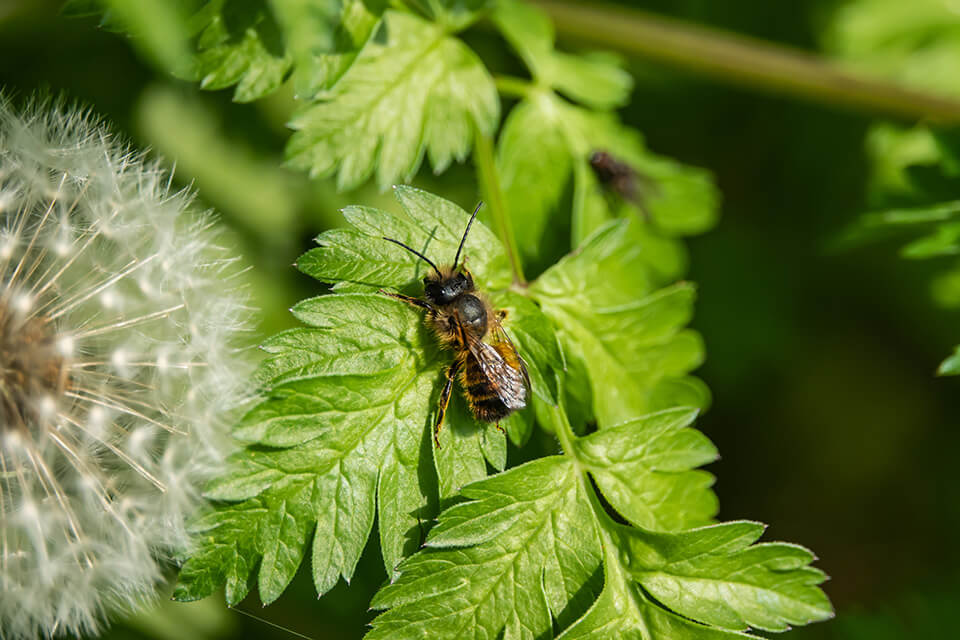Mason bees were the stars of the day last week.
We headed through the Lupin meadow admiring the newly surfaced leaves as we went. We did spot a few tree frogs but they were very quick to disappear into the grass hiding themselves away from us. We settled down and began our investigation into exactly who these little creatures are. I had brought along a male bee and some cocoons.
Mason bees are our native bee but don’t actually look anything like a bee at all. They have no stripes, are solitary insects and are non-aggressive. In fact the male has no stinger at all and the female will only sting if her life is threatened.
When light reflects off of the bees body the body looks a beautiful metallic green/blue and is quite hairy. We explored our bees under the microscope. We took a look at the anatomy of the bee and especially the compound eyes. We looked at how the Mason bees ‘sees’ and why this might be beneficial for the insect. We all put on our compound eyes and took a look at the world around us. The children tried to walk around using their compound eyes to much hilarity. Definitely not as graceful as the mason bee.
Mason bees are amazing pollinators. The don’t have a pollen basket like other bees situated behind the hind legs they instead have special hairs on their abdomen to catch and hold the pollen. We investigated pollination a little closer. We found some salmon berry flowers and took a closer look inside using our magnifiers seeing the stamen covered in pollen. We used our Q- tips to brush inside flowers then went and took a look under the microscope. The children were in awe at the secret world that can be found inside flowers. Along the way we talked more in depth about pollination and why Mason bees play such an important part in pollinating the fruit trees and flowers that surround us.
Then a look at the life cycle. Next to us there was a mason bee home that had been provided by the park workers. Mason bees require a habitat that will provide holes for nesting whether they are holes made by sap suckers or provided by humans, mud, pollen and of course nectar. They will only forage in a 100ft area from where they hatch.
Mason bees are quite remarkable and ingenious in their nest building. First the female will mate with a male then head off to find a suitable nesting site. Once found she will fill the backend of the hole with the nectar and pollen mixture, crawl in backwards to lay her egg and then covers up the hole with wet mud. This takes place anywhere between April and the end of May.
Inside the larva will hatch within a few days and feast on the pollen. After a short while the larva will spin a cocoon of silk around it’s body, there the larva will go through metamorphosis lying dormant through the winter until the temperature gets back up to about 15 degrees at noon and when the first fruit blossoms emerge. They then use their large mandibles to chew through the mud and the process begins all over again. Males are the first to emerge and are smaller than the females. They can be identified by the small soft fuzzy yellow patch on their head.
The female will last about a month and will lay up to two eggs a day. We sat quietly near the bee house watching as the females returned using their antennae to sense which hole belonged to them by identifying their pheromone that they had previously sprayed.
I had brought along some photos of what it looks like inside the tube once the egg had been laid. The children were completely fascinated. We headed off to play a game in the meadow. We set up some flowers, mud and pollen.
The bees had to go and collect what is required for nesting while evading the predators. The main predator of the mason bee is the bird. Some hilarity and fun ensued.
We then climbed some trees and searched for tree frogs. A lovely adventure!

